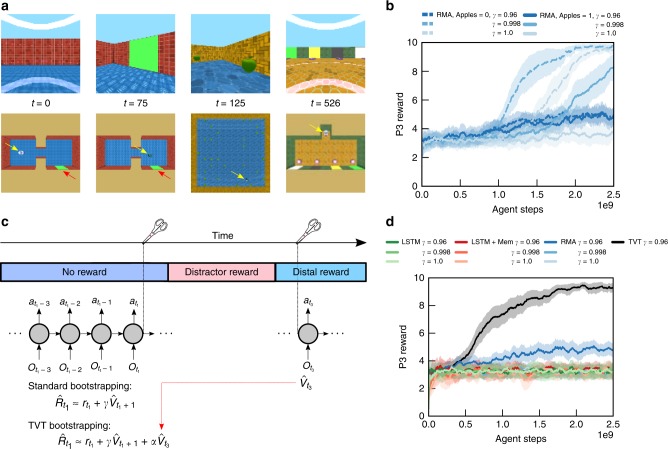Fig. 2.
Temporal Value Transport and type 1 information acquisition tasks. a First person (upper row) and top–down view (lower row) in Active Visual Match task while the agent is engaged in the task. In contrast to Passive Visual Match, the agent must explore to find the colored square, randomly located in a two-room environment. The agent and colored square are indicated by the yellow and red arrow, respectively. b Without rewards in P2, RMA models with large discount factors (near 1) were able to solve the task; the RMA with exhibited retarded but definite learning with modest P2 reward (1 point per apple). c Cartoon of the Temporal Value Transport mechanism: the distractor interval is spliced out, and the value prediction from a time point in P3 is directly added to the reward at time in P1. d The TVT agent alone was able to solve Active Visual Match with large rewards during the P2 distractor (Supplementary Movie 1) and faster than agents exposed to no distractor reward. The RMA with discount factor was able to solve a greater than chance fraction because it could randomly encounter the colored square in P1 and retrieve its memory in P3. In b, d, error bars represent standard errors across five agent training runs

